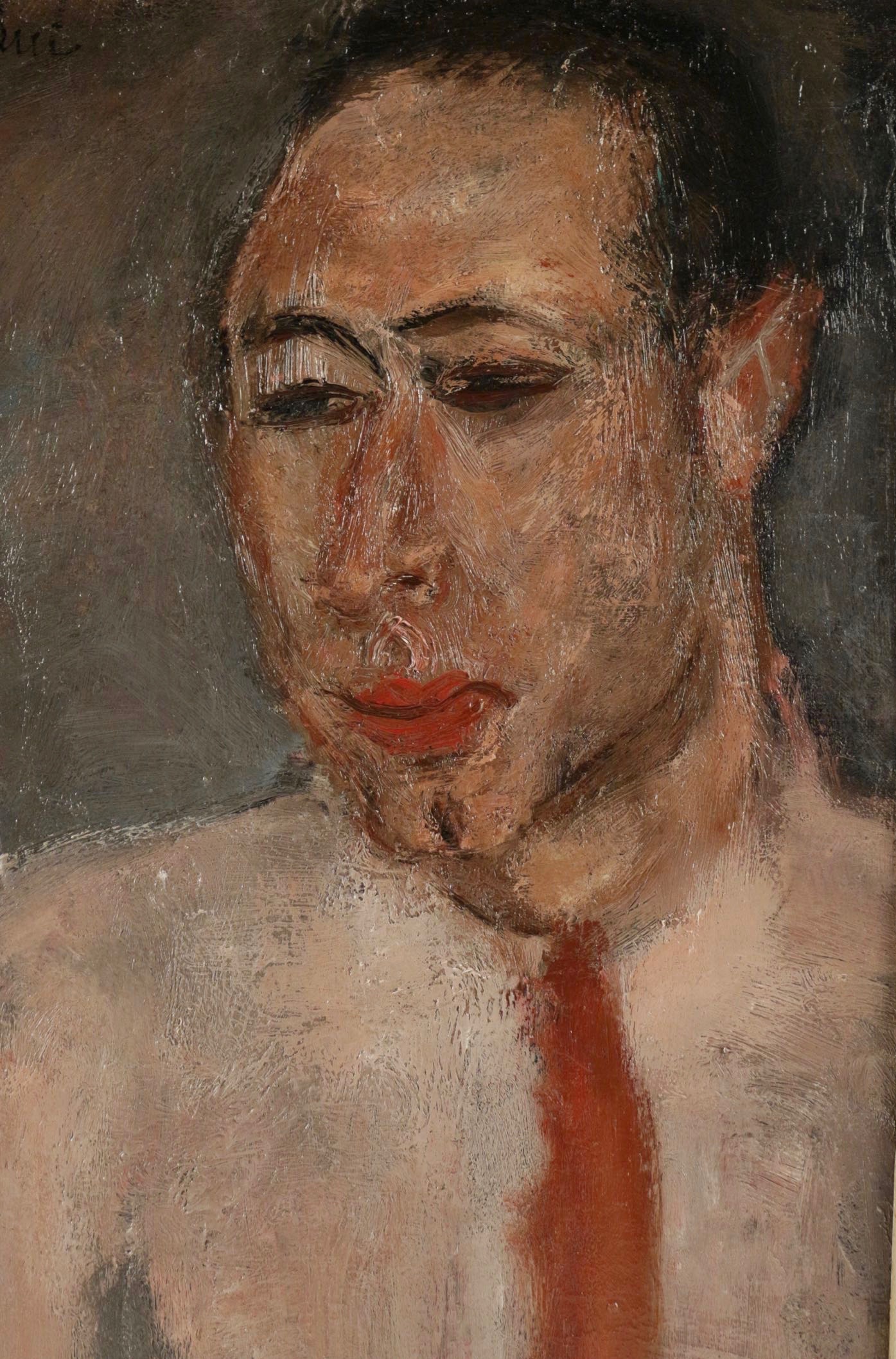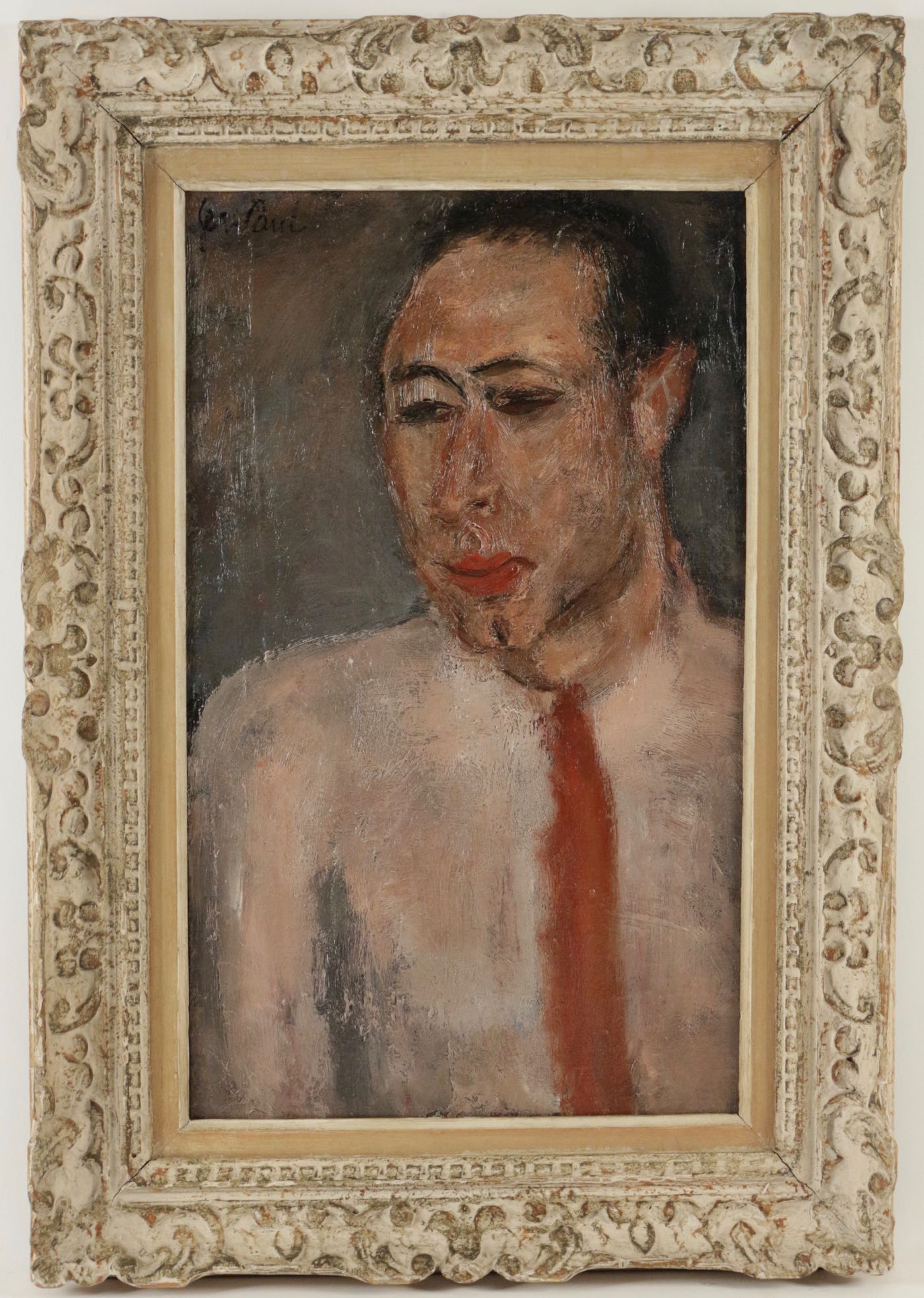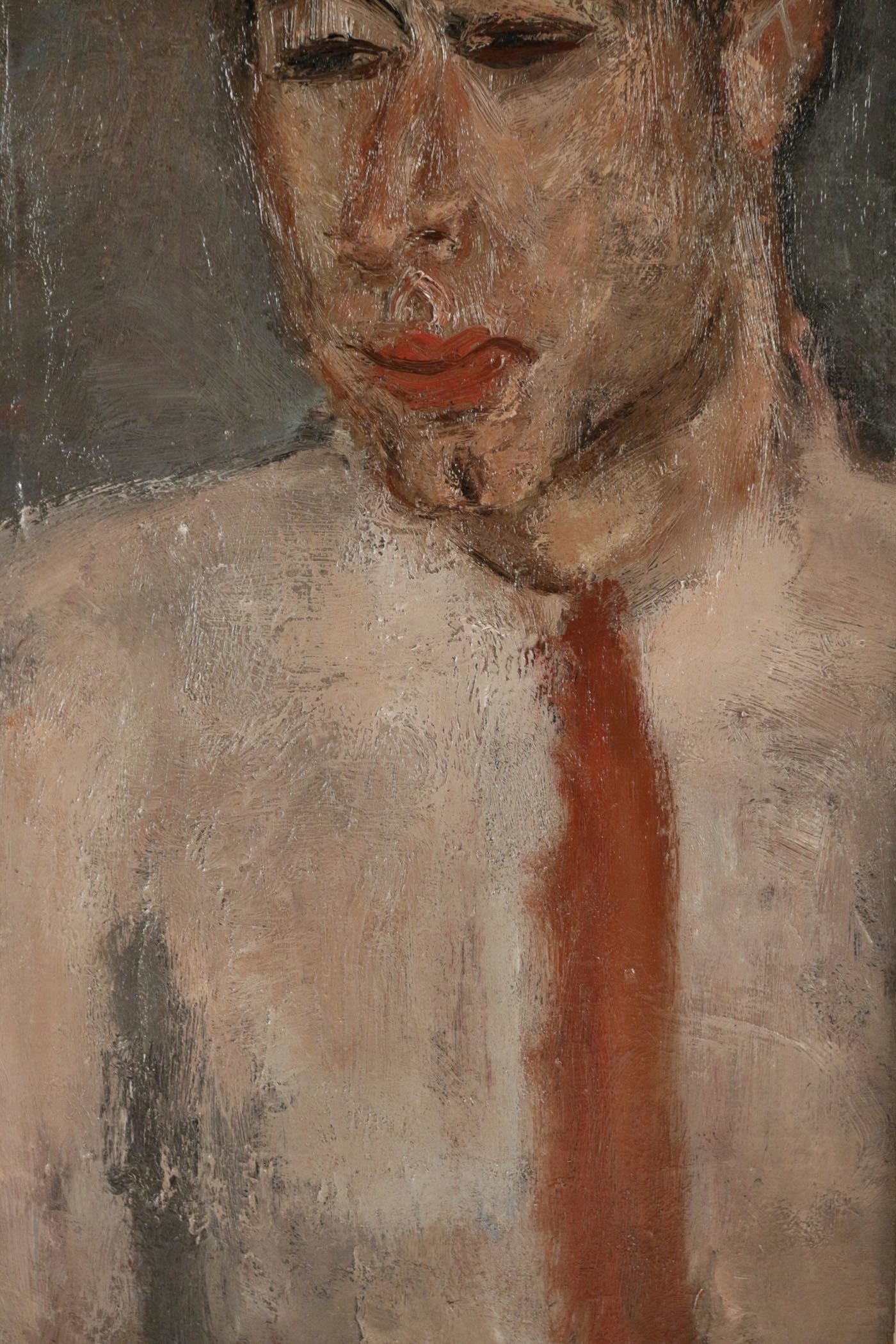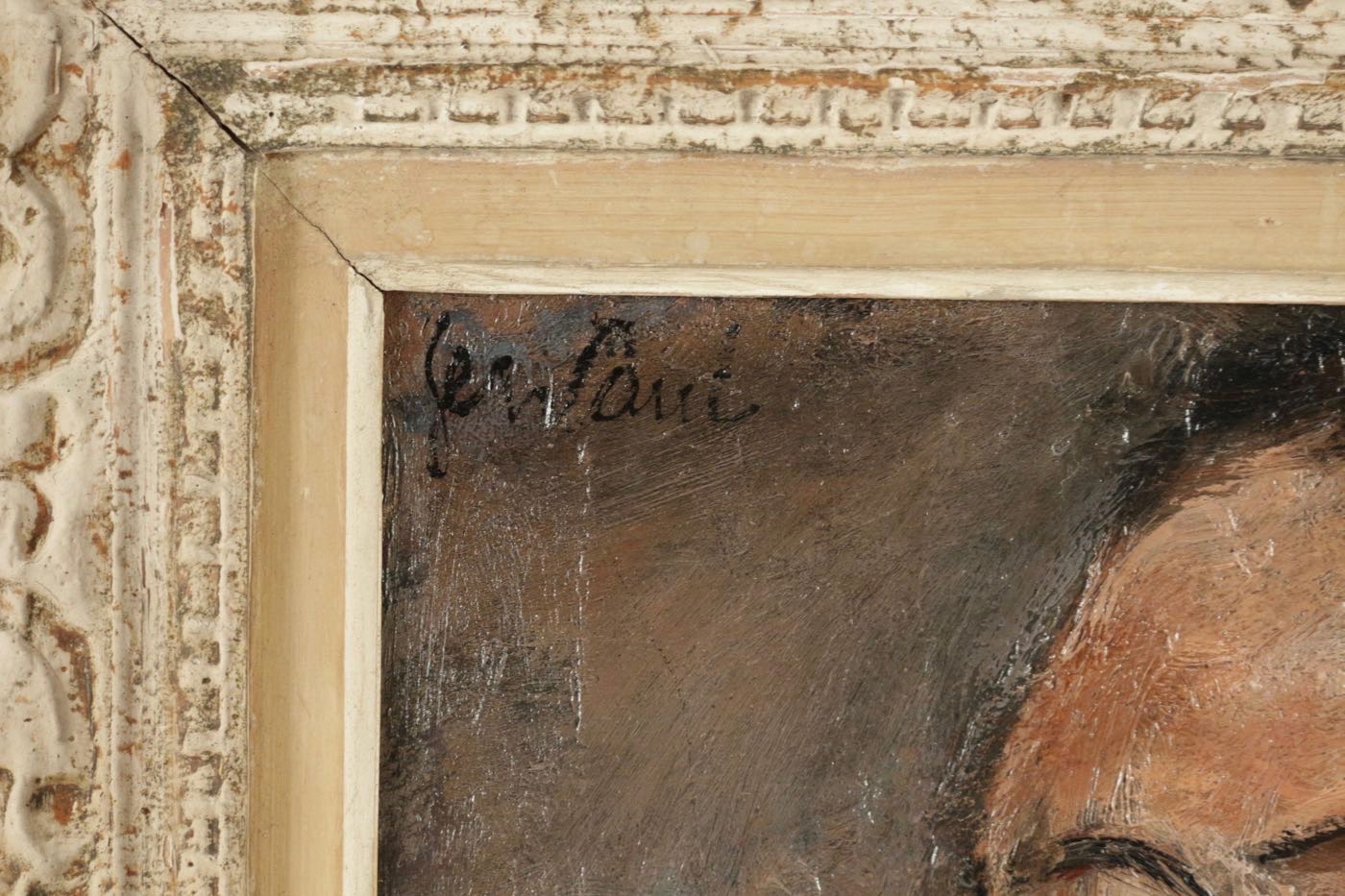gen paul
The toreador, 1925-1926
Oil on canvas
Sign top left
Dimensions: 55 x 33cm
With frame: 71.5 x 50 cm
Provenance: Guy Mairesse de Montfaucon collection
Price : sold
A certificate of authenticity is issued by Mr. Guy Mairesse de Montfaucon on 05/13/2002. He certifies that this work dates from the years 1925-1926. In the letter that accompanies the certificate, he specifies that “he may be a bullfighting man because Gen Paul often goes to Toledo. […] This expressionist portrait shows us Gen Paul’s progressive passage to portraits of which he will become a master”.
Gen Paul represents a picture which, if it seems sketchy, is in every way accomplished. The painter would paint the portrait of a toreador. When he returned to Paris, his mind was still imbued with Toledo and Spain, which he visited between 1924 and 1925. This painting would have been executed at the beginning of his production of portraits, for which he is renowned.
The toreador, the sidelong glance, is as if he were discussing. He put down his hat and cape. We hesitate: was he painted before his bullfight? Or later, as he releases the tension from his face and body? The color palette is restrained, but full of nuances. The face comes in pinks, purples, greens, and beiges.
The toreador’s lips echo the red of his tie ribbon, symbolically signified by a slender coat of paint. The portrait demonstrates all the talent of Gen Paul. Its simplicity is not apparent, it is in reality of a dazzling sobriety for who knows how to look into it.
Eugène Paul was born rue Lepic, in the heart of Montmartre. Her mother was an embroiderer and her father a café musician. He began to paint at an early age. His apprenticeship is original: as an apprentice interior decorator, he looks around him in the rich apartments.
Passionate about painting and eager for knowledge, he observes the works collected by art lovers, wherever his work has taken him. In addition, he learns about human anatomy by getting to know surgeons and accompanying them to operating rooms. He completed his training during the few years he attended the Ecole des Beaux-Arts in Paris.
In 1913, he volunteered for the front and was wounded. A year later, a second injury led to the amputation of his right leg. Back in Paris in 1916, he began to paint. His first oil painting – the Moulin de la Galette seen from his window – dates from 1916. From then on, Eugène Paul began his career as a painter. It represents many views of Paris to satisfy demand.
He signed for the first time a painting “GEN-PAUL” in 1918. In 1920, he exhibited at the Salon d’Automne, and remained faithful to this institution, as well as to the Salon des Indépendants. He travels to Spain and confronts the masterpieces of the masters: Goya, El Greco, Velasquez… On his return, he uses black even more in his compositions.
His first personal exhibition took place at the Bing Gallery in 1926. He illustrated several books by Céline, including Voyage au bout de la nuit and Mort au credit in 1942. He made engravings, some of which were published in a collection entitled Vues de Montmartre .
At the end of World War II, he traveled frequently to the United States and New York. At the time, he held the title of general. In 1952, the Drouant-David gallery in Paris devoted a retrospective to him. Besides the annual events of the Parisian art scene (the Salons), Gen Paul exhibits only exceptionally. Indeed, the artist refuses to work with galleries, he does not depend on any of them. At the end of his life, he travels frequently to France and Spain.
Museums:
Posthumous group exhibitions include:
• Roussard Gallery, Paris (1999)
• Roussard Gallery, Paris (2002)
Gen-Paul is exhibited in France
• In Paris: National Center for Plastic Arts; City of Paris Museum of Modern Art; National Museum of Modern Art – Center Pompidou; Bourdelle museum
• In the provinces: Les Abattoirs, Toulouse





